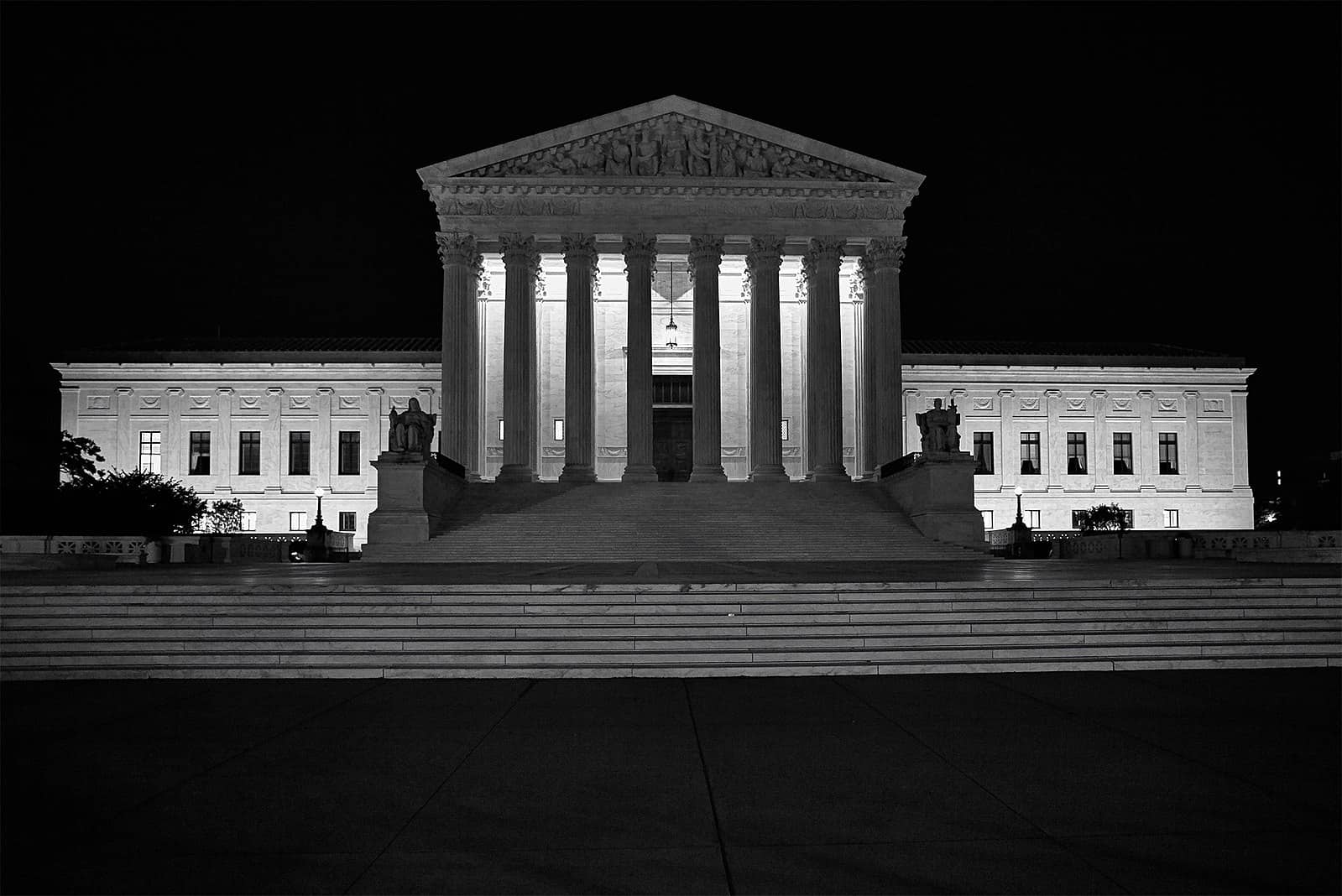
Andrew Strom is a union lawyer based in New York City. He is also an adjunct professor at Brooklyn Law School.
When the current Supreme Court decides a labor case, it’s like watching top film stars in the third sequel to a movie franchise – you know how it’s going to turn out and you also know that you’re not going to see their best work. The 6-3 decision in Cedar Point Nursery v. Hassid is yet another poorly reasoned anti-labor decision. Chief Justice Roberts wrote the decision, and if everything you know about the Court comes from the mainstream media, you might expect a cautious and unifying opinion. Instead, the Court’s extreme ruling creates unprecedented rights for property owners, and disregards or misrepresents the Court’s prior opinions.
The agribusinesses in Cedar Point argued that a regulation authorizing union organizers to enter growers’ property to talk to workers before work and during lunch breaks was a “taking” of their property, and thus the growers were entitled to compensation. The first question the Court had to answer was what exactly was taken by this regulation. The Court’s answer was that California took the growers’ “right to exclude.” Chief Justice Roberts conceded that “[b]efore the 20th century, the takings clause was understood to be limited to physical appropriations of property.” This sentence, by itself, should have been enough to generate a dissent from Justice Thomas. That’s what happened in Mahanoy Area School District v. B.L., the student speech case the Court decided on the same day. In Mahanoy, Justice Thomas started his dissent by looking to what “ordinary citizens at the time of the Fourteenth Amendment’s ratification would have understood the right to encompass.” But here, as in Janus, none of the Court’s self-proclaimed originalists seemed to mind the departure from the original understanding of the Constitution’s meaning.
Before the ruling in Cedar Point, the Court had never held that a property owner was entitled to compensation from the State simply because the State authorized some individuals to enter the owner’s private property. In fact, the Court had expressly rejected a similar claim in Pruneyard Shopping Center v. Robins. In Pruneyard, the California Supreme Court had required the owner of a shopping mall to allow individuals to hand out political leaflets on the mall’s private property, and the U.S. Supreme Court found that was not a taking. Justice Roberts insisted that Pruneyard was different because “Pruneyard was open to the public, welcoming some 25,000 patrons a day.” But that misstates the rationale the Court relied upon in Pruneyard. Prior to its decision in Pruneyard, in Lloyd v. Tanner, the Court had recognized that a mall owner who invites the public in to shop still has an interest in keeping out political pamphleteers. In Pruneyard, the Court held there was no “taking,” not because the mall was open to the public, but because “there [was] nothing to suggest that preventing the [mall owner] from prohibiting this sort of activity will unreasonably impair the value or use of the property as a shopping center.” Nothing in the text of the Constitution even suggests that property owners’ rights should depend on how many people they have invited on to their property. And, businesses that are open to the public certainly act as though they value the right to exclude – if not, “no shoes, no shirts, no service” signs never would have become ubiquitous.
In finding that California needed to compensate the agribusinesses for limiting their “right to exclude,” the Court relied heavily on its decision in Kaiser Aetna v. United States. The Court described the facts in that case as follows: “[a] real estate developer dredged a pond, converted it into a marina, and connected it to a nearby bay and the ocean. The government asserted that the developer could not exclude the public from the marina because the pond had become a navigable water.” But, the Court’s rationale for finding a taking in Kaiser Aetna was based in part on the fact that the State was requiring the developer “to allow free access to the dredged pond while [the developer’s] agreement with their customers calls for an annual $72 [$257 in today’s dollars] regular fee.” The Court noted that the customers were paying for the developer to “maintain the privacy and security of the pond.” In other words, Kaiser Aetna would be a compelling precedent if the growers in Cedar Point had used their property to build a private retreat where they charged customers to protect their “privacy and security.”
In two other cases the Court pointed to as precedent – U.S. v. Causby, where the government flew military aircraft over a farm, and Portsmouth Harbor Land & Hotel Co. v. U.S., where the government fired guns over a resort, the government’s actions devalued the landowner’s property by interfering with the activities the property owner had been conducting on the land. But, here there was no claim that the access sought by union organizers interfered with the growers’ operations, or in any way made the property less valuable.
The Court had previously held in NLRB v. Babcock & Wilcox that employers subject to the National Labor Relations Act must allow union organizers on their property if “other available channels of communication” are not available, or if the employer “discriminate[s] against the union by allowing other distribution.” Chief Justice Roberts said the Court could ignore that precedent because “Babcock did not involve a takings claim.” In a separate concurrence, Justice Kavanaugh insisted that Babcock “strongly supports” the Cedar Point decision because there is no taking when union organizers “need” access to reach workers. Kavanaugh’s concurrence not only ignores the discrimination prong of Babcock, but would seem to support a remand to give the State a chance to show why access was necessary here.
The Court tried to minimize the impact of its holding by asserting that “government health and safety inspection regimes will generally not constitute takings.” The Court suggested that access for health and safety inspections would not require compensation because there is a nexus between the need for inspections and the granting of permits or licenses. Yet, here, the Court simply declared that “the access regulation is not germane to any … risk posed to the public.” In fact, as the California Agricultural Labor Relations Board had pointed out in its brief, the access regulation was enacted after the State legislature had found that the State’s failure to protect the farmworkers’ right to organize had created “unstable and potentially volatile conditions.” The State of California made a determination that giving access rights to union organizers as part of a comprehensive regulatory scheme would substantially reduce the risk of volatility.
As Ben has suggested, it may well be that the just compensation for a grant of access that does not diminish the value of agricultural land is minimal. If so, the result of this decision would just be to create more work for lawyers. But the Court’s opinion is another reminder that whatever else divides the six right-wing Justices, they are united in their hostility to unions.








Daily News & Commentary
Start your day with our roundup of the latest labor developments. See all
July 11
Regional director orders election without Board quorum; 9th Circuit pauses injunction on Executive Order; Driverless car legislation in Massachusetts
July 10
Wisconsin Supreme Court holds UW Health nurses are not covered by Wisconsin’s Labor Peace Act; a district judge denies the request to stay an injunction pending appeal; the NFLPA appeals an arbitration decision.
July 9
In Today’s News and Commentary, the Supreme Court green-lights mass firings of federal workers, the Agricultural Secretary suggests Medicaid recipients can replace deported farm workers, and DHS ends Temporary Protected Status for Hondurans and Nicaraguans. In an 8-1 emergency docket decision released yesterday afternoon, the Supreme Court lifted an injunction by U.S. District Judge Susan […]
July 8
In today’s news and commentary, Apple wins at the Fifth Circuit against the NLRB, Florida enacts a noncompete-friendly law, and complications with the No Tax on Tips in the Big Beautiful Bill. Apple won an appeal overturning a National Labor Relations Board (NLRB) decision that the company violated labor law by coercively questioning an employee […]
July 7
LA economy deals with fallout from ICE raids; a new appeal challenges the NCAA antitrust settlement; and the EPA places dissenting employees on leave.
July 6
Municipal workers in Philadelphia continue to strike; Zohran Mamdani collects union endorsements; UFCW grocery workers in California and Colorado reach tentative agreements.